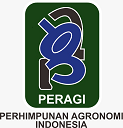Effect of Drying Method and Temperature on the Quality of Cascara Tea
Abstract
This study aims to determine the effect of the drying method and optimum temperature on the quality of coffee skin tea (cascara). This research was conducted at the Laboratory of Food Processing Technology and Agricultural Products, Department of Agricultural Products Technology, Faculty of Agriculture, Santo Thomas Catholic University, Medan. This research was conducted in March 2023 until completion. This research was conducted using a completely randomized design (CRD), which consisted of 2 factors. The first factor is the drying method (P), namely L : P1 = 4 hours, P2 = 6 hours, P3 = 8 hours and P4 = 10 hours. The second factor is the effect of drying temperature on the quality of tea from coffee skin (T), namely: T1 = 40°C, T2 = 50°C, T3 = 60°C and T4 = 70°C. The results showed that the drying method had a very significant effect (p<0.01) on the yield, water content, polyphenol content, organoleptic value of taste, organoleptic value of aroma and color organoleptic value of cascara tea produced. The longer drying time, the yield and organoleptic value of flavor increase, while the water content, polyphenol content, organoleptic value of aroma and organoleptic value of cascara tea produced decreases. The drying temperature has a very significant effect (p<0.01) on yield, moisture content, polyphenol content, the organoleptic value of taste, the organoleptic value of aroma, and organoleptic value of color. The higher the drying temperature, the higher the yield and taste organoleptic value, while the water content, polyphenol content, aroma organoleptic value and color organoleptic value decreased. The interaction of the drying method and temperature treatment had a significant effect (p<0.015) on the moisture content, polyphenol content, and aroma organoleptic value of cascara tea but had no significant effect (p>0.05) on yield, taste organoleptic value, and color organoleptic value of coffee skin tea (cascara). The best quality of cascara tea was obtained in the treatment combination P1T4.
Keywords
Full Text:
PDFReferences
Arya, S. S., Venkatram, R., More, P. R., & Vijayan, P. (2022). The wastes of coffee bean processing for utilization in food: a review. Journal of Food Science and Technology, 59(2), 429–444. https://doi.org/10.1007/s13197-021-05032-5
Baihaqi, B., Desparita, N., Fridayati, D., Akmal, A., & Hakim, S. (2022). Kajian Strategi Penerapan Teknologi Pascapanen Pada Rantai Pasok Kopi Ditinjau Dari Aspek Nilai Tambah Dan Susut Pasca Panen. Jurnal Teknologi Pengolahan Pertanian, 4(1), 18. https://doi.org/10.35308/jtpp.v4i1.5683
DePaula, J., Cunha, S. C., Cruz, A., Sales, A. L., Revi, I., Fernandes, J., Ferreira, I. M. P. L. V. O., Miguel, M. A. L., & Farah, A. (2022). Volatile Fingerprinting and Sensory Profiles of Coffee Cascara Teas Produced in Latin American Countries. Foods, 11(19). https://doi.org/10.3390/foods11193144
Dufour, B. P., Kerana, I. W., & Ribeyre, F. (2021). Population dynamics of Hypothenemus hampei (Ferrari) according to the phenology of Coffea arabica L. in equatorial conditions of North Sumatra. Crop Protection, 146, 105639. https://doi.org/10.1016/j.cropro.2021.105639
Firdissa, E., Mohammed, A., Berecha, G., & Garedew, W. (2022). Coffee Drying and Processing Method Influence Quality of Arabica Coffee Varieties (Coffee arabica L.) at Gomma I and Limmu Kossa, Southwest Ethiopia. Journal of Food Quality, 2022, 1–8. https://doi.org/10.1155/2022/9184374
Havlík, J., Dlouhý, T., & Pitel’, J. (2022). Drying Biomass with a High Water Content—The Influence of the Final Degree of Drying on the Sizing of Indirect Dryers. Processes, 10(4), 739. https://doi.org/10.3390/pr10040739
Heeger, A., Kosińska-Cagnazzo, A., Cantergiani, E., & Andlauer, W. (2017). Bioactives of coffee cherry pulp and its utilisation for production of Cascara beverage. Food Chemistry, 221, 969–975. https://doi.org/10.1016/j.foodchem.2016.11.067
Ilmu dan Teknologi Pangan, J., Ayu Tri Ulandari, D., Ayu Nocianitri, K., Made Indri Hapsari Arihantana, N., Program Studi Ilmu dan Teknologi Pangan, M., Teknologi Pertanian, F., Program Studi Ilmu dan Teknologi Pangan, D., & Kampus Bukit Jimbaran, U. (2019). Pengaruh Suhu Pengeringan Terhadap Kandungan Komponen Bioaktif Dan Karakteristik Sensoris Teh White Peony. 8(1), 36–47.
Karyadi, J. N. W., Imaniar, D. I., Akbar, M. A., Marfu’ah, S., Ayuni, D., & Bintoro, N. (2024). The Effect of Various Drying Methods on the Quality of Rose (Rosa damascena) Tea. AgriTECH, 44(1), 1. https://doi.org/10.22146/agritech.64918
Kim, Y., Goodner, K. L., Park, J.-D., Choi, J., & Talcott, S. T. (2011). Changes in antioxidant phytochemicals and volatile composition of Camellia sinensis by oxidation during tea fermentation. Food Chemistry, 129(4), 1331–1342. https://doi.org/10.1016/j.foodchem.2011.05.012
Mahiuddin, M., Khan, Md. I. H., Kumar, C., Rahman, M. M., & Karim, M. A. (2018). Shrinkage of Food Materials During Drying: Current Status and Challenges. Comprehensive Reviews in Food Science and Food Safety, 17(5), 1113–1126. https://doi.org/10.1111/1541-4337.12375
Maliza, R., Aulah, J., & Aji, O. R. (2020). Antibacterial Activity of Coffee Arabica (Coffea arabica L.) Fruit Skin Methanol Extract On Bacteri Eschericia coli and Staphylococcus aureus. Bioscience, 4(2), 162. https://doi.org/10.24036/0202042108692-0-00
Najiyati, S., & Danarti. (2004). Budidaya Tanaman Kopi dan Penanganan Pasca Panen (Jakarta: Penebar Swadaya, Ed.).
Obanda, M., Owuor, P. O., Mang’oka, R., & Kavoi, M. M. (2004). Changes in thearubigin fractions and theaflavin levels due to variations in processing conditions and their influence on black tea liquor brightness and total colour. Food Chemistry, 85(2), 163–173. https://doi.org/10.1016/S0308-8146(02)00183-8
Oliveira, S. M., Brandão, T. R. S., & Silva, C. L. M. (2016). Influence of Drying Processes and Pretreatments on Nutritional and Bioactive Characteristics of Dried Vegetables: A Review. Food Engineering Reviews, 8(2), 134–163. https://doi.org/10.1007/s12393-015-9124-0
Qu, F., Zhu, X., Ai, Z., Ai, Y., Qiu, F., & Ni, D. (2019). Effect of different drying methods on the sensory quality and chemical components of black tea. LWT, 99, 112–118. https://doi.org/10.1016/j.lwt.2018.09.036
Roslan, A. S., Ismail, A., Ando, Y., & Azlan, A. (2020). Effect of drying methods and parameters on the antioxidant properties of tea (Camellia sinensis) leaves. Food Production, Processing and Nutrition, 2(1). https://doi.org/10.1186/s43014-020-00022-0
Rostagno, M. A., Celeghini, R. M. S., Debien, I. C. N., Nogueira, G. C., & Meireles, M. A. A. (2015). Phenolic Compounds in Coffee Compared to Other Beverages. In Coffee in Health and Disease Prevention (pp. 137–142). Elsevier. https://doi.org/10.1016/B978-0-12-409517-5.00015-2
Sanz-Uribe, J. R., Yusianto, Menon, S. N., Peñuela, A., Oliveros, C., Husson, J., Brando, C., & Rodriguez, A. (2017). Postharvest Processing—Revealing the Green Bean. In The Craft and Science of Coffee (pp. 51–79). Elsevier. https://doi.org/10.1016/B978-0-12-803520-7.00003-7
Selvarajan, E., Veena, R., & Manoj Kumar, N. (2018). Polyphenol Oxidase, Beyond Enzyme Browning. In Microbial Bioprospecting for Sustainable Development (pp. 203–222). Springer Singapore. https://doi.org/10.1007/978-981-13-0053-0_10
Selvie Mahrita, Wijantri Kusumadati, Evi Faridawaty, & Tianto, T. (2022). Pengaruh Lama Pengeringan Terhadap Mutu Teh Herbal Daun Sungkai (Peronema canescens Jack). Jurnal Cakrawala Ilmiah, 2(4), 1411–1422. https://doi.org/10.53625/jcijurnalcakrawalailmiah.v2i4.4328
Tham, T. C., Ng, M. X., Gan, S. H., Chua, L. S., Aziz, R., Abdullah, L. C., Ong, S. P., Chin, N. L., & Law, C. L. (2018). Impacts of different drying strategies on drying characteristics, the retention of bio-active ingredient and colour changes of dried Roselle. Chinese Journal of Chemical Engineering, 26(2), 303–316. https://doi.org/10.1016/j.cjche.2017.05.011
Ullah, F., Zhang, L., Ji, G., Irfan, M., Ma, D., & Li, A. (2022). Experimental analysis on products distribution and characterization of medical waste pyrolysis with a focus on liquid yield quantity and quality. Science of The Total Environment, 829, 154692. https://doi.org/10.1016/j.scitotenv.2022.154692
Wolska, J., Janda, K., Jakubczyk, K., Szymkowiak, M., Chlubek, D., & Gutowska, I. (2017). Levels of Antioxidant Activity and Fluoride Content in Coffee Infusions of Arabica, Robusta and Green Coffee Beans in According to their Brewing Methods. Biological Trace Element Research, 179(2), 327–333. https://doi.org/10.1007/s12011-017-0963-9
Yamin, M., Furtuna Ayu, D., Hamzah, F., Studi Teknologi Hasil Pertanian, P., & Teknologi Pertanian, J. (2017). Lama Pengeringan Terhadap Aktivitas Antioksidan Dan Mutu Teh Herbal Daun Ketepeng Cina (Cassia Alata L.) Effect Of Dry Time On Antioxidant Activity And Quality Of Ketepeng Cina(Cassia alata L.) Leaf Herbal Tea. In Jom Faperta (Vol. 4, Issue 2).
Zhai, X., Zhang, L., Granvogl, M., Ho, C., & Wan, X. (2022). Flavor of tea ( Camellia sinensis ): A review on odorants and analytical techniques. Comprehensive Reviews in Food Science and Food Safety, 21(5), 3867–3909. https://doi.org/10.1111/1541-4337.12999
Refbacks
- There are currently no refbacks.



























